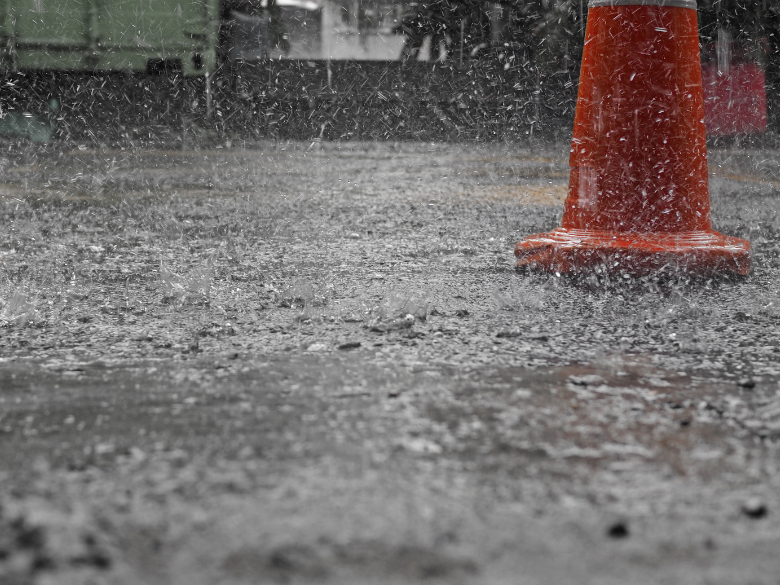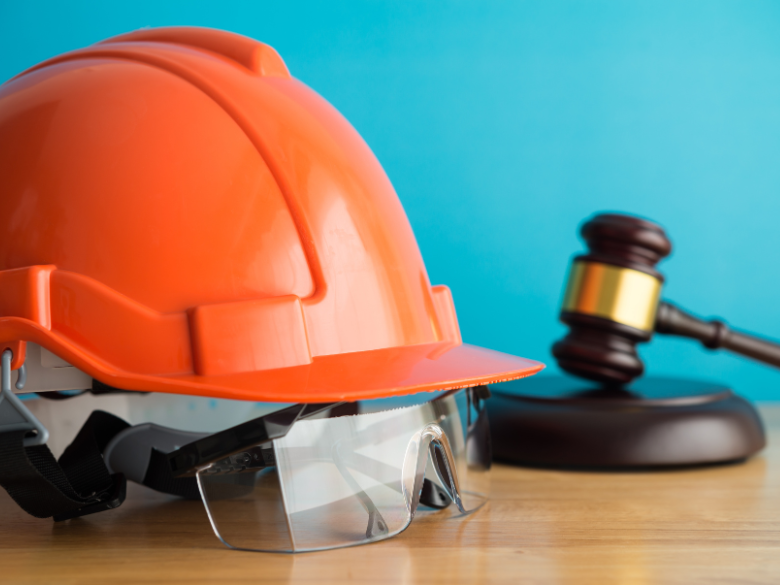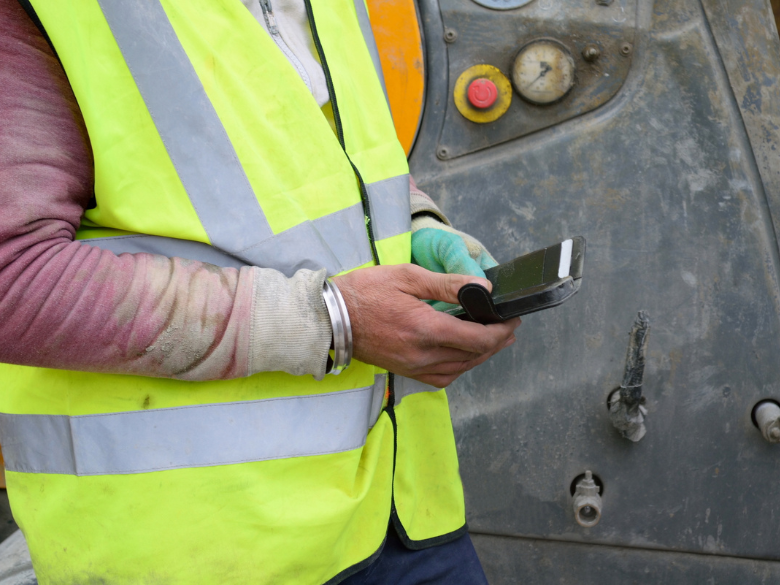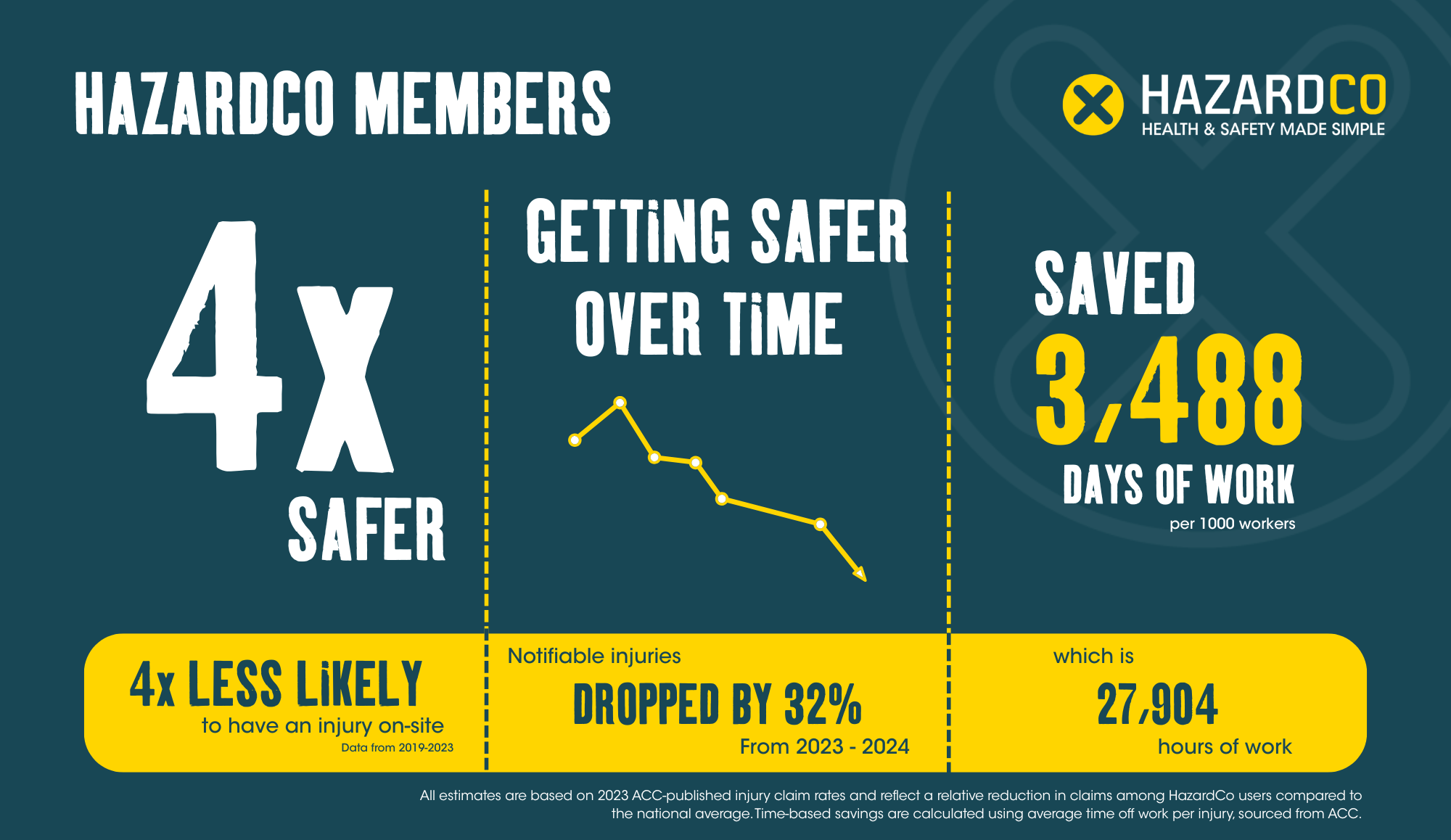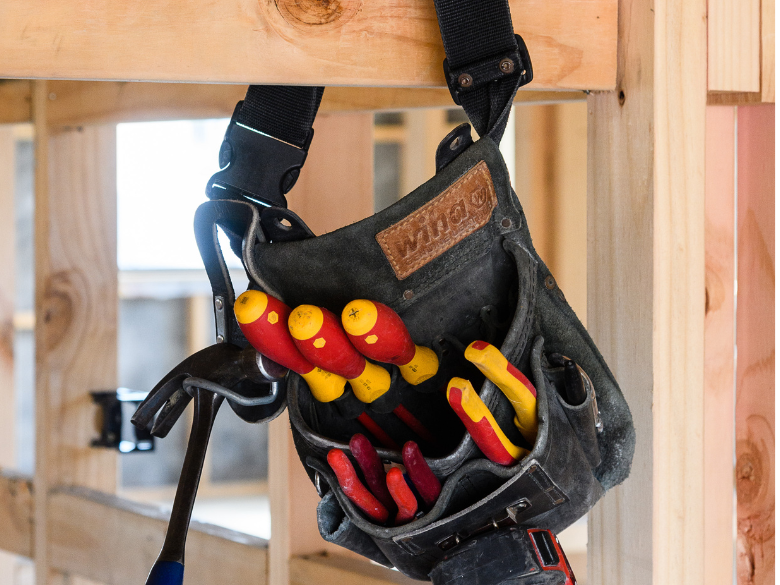
As a leading Health & Safety provider in NZ, we are staying close to the proposed changes to the H&S regulations and working to influence changes where we can. When new rules do come through, we’ll break them down – what’s changed, why it’s changed, and most importantly, how businesses can put the changes into practice, as we know one size doesn’t fit all.
You’ve probably seen the headlines about the government’s proposed health and safety reforms that aim to reduce red tape. But here’s the problem: these changes won’t make construction any safer. In fact, there’s a real risk they could do the opposite.
Construction is one of the highest-risk industries in New Zealand. Hard-won progress in health and safety hasn’t come by chance, it’s been built over years of effort, investment, and learning from tragedy. Weakening the rules now risks undoing that progress and putting workers back in harm’s way.
Here’s what’s on the table for regulation changes:
Our position is clear: Construction needs strong, enforceable safety standards. Easing requirements in the name of reducing red tape might sound appealing, but it won’t protect workers. It risks repeating the mistakes of the past, where safety was treated as optional until disaster forced change.
Right now, there are too many different requirements, and what needs to be done often depends on who’s asking for the information. This creates confusion on-site. The focus needs to be on providing consistency, with clear guidelines developed by industry experts and enforced by WorkSafe. That way, everyone knows what’s expected, and we can reduce confusion while keeping people safe.
HazardCo members are already leading the way, being four times safer than the industry average, and we’ll keep supporting you with practical, effective systems and expert advice. We’ve shared these concerns with the government because the voices of small and medium-sized building companies must be heard. You know better than anyone the pressure of time and cost, and you also know the price of a serious injury.
For now, nothing has changed, these reforms are still at the consultation stage. What matters most is clarity and standards that builders and tradies can rely on. And we’ll keep pushing for guidelines that genuinely protect builders and tradies, not water them down.
In the meantime, keep doing what you do best: looking after your team, working safely, and documenting your safety actions. And know that we’ll keep you updated every step of the way.
NZ weather changes fast and when it does so do the hazards on your site. Strong winds, extreme temperatures, and heavy rain can quickly lead to slips, trips, heat stress, damaged gear or vehicle accidents.
Work doesn’t always stop when adverse weather rolls in, so it’s important to know what to do to keep your workers safe. However, safety must come first, so if conditions become unsuitable or too dangerous, work should stop until it is safe to continue.
Vehicle accidents don’t just happen on the roads; they can also happen within the work site. Highlight to your team that driving rules for the road also apply to your workplace, and it’s important that they take care while operating work vehicles and equipment. To make sure your vehicles and plant are safe before use:
The last thing you need is for the weather to catch you by surprise. Keep an eye on the weather forecast so your workers can:
A quick weather briefing at your toolbox talk keeps everyone prepared.
Be vigilant when ensuring that workers are wearing proper PPE and suitable clothing when adverse weather conditions are present.
By ensuring that PPE is properly selected, fitted, and maintained, you can significantly reduce the risks associated with adverse weather. Correct PPE not only reduces weather-related risks but also supports comfort and productivity, allowing work to continue safely.
Adverse weather is a real workplace hazard that increases the risk of slips, trips, falls, and other injuries. Include it in your hazard register and safety plans, make sure workers know they can stop work if it’s unsafe, and encourage reporting of any incidents or near misses.
Plan ahead, gear up, and put safety first so your crew stays safe, no matter the weather.
If you run a ute, van, or light truck for work, big changes are coming to how you pay for New Zealand’s roads. The Government has confirmed it’s moving away from petrol excise at the pump and towards electronic Road User Charges (RUC) for all light vehicles, not just diesel and EVs. The shift is designed to be simpler, fairer, and more transparent, with a rollout that starts by modernising the current system and then expanding it to everyone.
What you pay will be based on kilometres travelled and vehicle weight, not how much petrol you buy. For firms with utes and vans logging serious site-to-site kilometres, it makes budgeting more predictable. Heavier setups will pay more per km, as they do now under RUC.
No more paper labels, fewer trips to buy licences, and eRUC devices you can install once and forget.
This is where our partnership with BONNET comes in. BONNET’s fleet management platform makes it simple to track kilometres, manage RUC, and get clear reporting across your vehicles, saving you admin time and helping you stay compliant. And what’s even better is that you get your first 2 vehicles free!
Because the new system opens the door to more electronic devices, you’ll likely be able to connect RUC with your existing GPS/telematics. With BONNET, you can integrate RUC data with your wider fleet info, fuel, servicing, and driver activity all in one place. That means less double-handling and better oversight for site managers.
If you’re trialling electric vans or plug-in hybrids, note that everyone will ultimately be on RUC. For heavy EVs, the paid RUC start date is 1 July 2027.
The shift to electronic RUC is about making costs clearer and admin lighter. With our partnership with BONNET, you’ll be in the best position for automating the admin, keeping your records clean, and giving you insights to run your fleet smarter. Start planning now, and when the change lands, your team will be ready.
Still got questions? Join our live Q&A session on the 9th of September
You might’ve seen the latest headlines about H&S reforms. The government’s still working through the details, so we don’t have any concrete updates for you just yet. But here’s the key thing to note: While the aim is to reduce red tape for some industries, construction remains high-risk, and rightly deserves a strong safety focus. That means your core responsibilities on-site aren’t going anywhere.
On 28 July 2025 the Minister for Workplace Relations and Safety recently announced an update on the proposed health and safety reform. They’re aiming to simplify things for the construction industry by:
But remember….and this is a key point…it’s all still at the consultation stage so nothing has changed yet.
Construction hasn’t become safer by chance, it’s the result of continuous effort, investment, and shared commitment from everyone.
HazardCo members are doing great work to make their sites safer. We’ve crunched the numbers and HazardCo members are 4 times safer than the industry average so keep up the good work.
We’ve helped thousands of Kiwi builders make their worksites safer. Our Health & Safety Advisory team has also shared what we’re seeing on-site with the government, so they understand the real challenges builders face. It’s important that small and medium-sized building companies have a voice because the pressures around time and cost for you are real.
We wanted to break down our thoughts on the key areas for proposed changes that may affect you and your team:
Just as CHASNZ does, we welcome changes and clarity that help create consistency in H&S pre-qualification to ensure that everyone is following the same standard. As a CHASNZ-endorsed provider for the residential building sector, we agree that often prequalification gets derailed by cost, duplication, and misaligned systems. Our system addresses this by empowering residential builders to understand what good safety practice looks like and what’s required to meet proper standards. Rather than just ticking boxes, we help businesses build genuine safety knowledge and systems, ensuring they understand the ‘why’ behind safety requirements and can implement them effectively. We will continue to keep our ear to the ground with regard to any changes in this space
Chris Alderson, CEO of CHASNZ, points out that falling from heights is the leading cause of workplace deaths around the world. New Zealand is different, we’ve made strong progress with our safety practices when working at height. But if scaffolding rules are relaxed, those gains could be lost unless it’s handled with extreme care. We’ve seen first-hand the impact of fall injuries on workers, families, and businesses, and we’ll be keeping a close eye on this to share insights as things develop.
When it comes to dust exposure, the Minister’s review will look at substances like soft wood dust, hard wood dust and welding fumes. While reviewing the science is always worthwhile, Jeff Sissions points out that it’s worth noting these exposure standards were already updated recently in consultation with industry and aligned with international benchmarks. He says the bigger issue in this area is that the standards aren’t legally binding – they’re guidelines. That means the real risk is that without strong enforcement or mandatory limits, workers could still be exposed to unsafe levels of dust that can cause long-term, sometimes life-threatening, respiratory illness.
Another area of concern is the potential relaxation of rules around machinery guarding. Guarding is the first line of defence to stop workers from being pulled into, crushed, or caught by dangerous moving parts. New Zealand already sees far too many serious injuries from machinery, and weakening these requirements could make the problem worse. Even small changes to the standards risk creating loopholes that allow businesses to cut corners, putting workers at serious risk of life-changing injuries.
Construction remains one of the highest-risk industries in New Zealand. That’s why we’ll always keep safety front and centre. And we’ll make sure your system reflects the most up-to-date rules, so you don’t have to stress about missing anything.
In the meantime, keep doing what you do best, looking out for your team, working safely and documenting your safety actions.
We’ll keep you posted as the reform progresses. If you’ve got questions or want to chat through what this means for your site, give us a call. We’re always here to help.
Want an easy way to make your workplace safer without spending a cent? Here’s a simple trick that takes just 30 minutes and can help prevent incidents on the job.
Whether you call it a safety meeting or a toolbox talk, get everyone to list their top 10 workplace hazards—the things that could go wrong and cause injuries. This could be anything from slippery floors to dodgy equipment or working with chemicals.
Once everyone’s shared their list, use the HazardCo Safety Meeting/toolbox talk feature to record and combine the results into a master list of the 10 biggest hazards in your workplace. This makes sure nothing important gets missed and gives your team a clear safety focus.
Now that you know the biggest risks, it’s time to do something about them. This list can help your workplace:
By using the app all of this is tracked and recorded, so your team has solid proof of what’s been done to make work safer.
Incidents at work can be serious, but most of them can be prevented. This simple 30-minute exercise gets everyone involved, so safety isn’t just a rule—it’s part of the way your team works. Plus, with HazardCo’s easy reporting tools, you can keep improving and stay ahead of risks before they become real problems.
So next time you are running a meeting, encourage everyone to speak up about H&S – their input could stop someone getting hurt.
If you have any questions, reach out to the HazardCo team. We are always here to help.
At HazardCo, we’re all about making health and safety simple – and it’s working. New data shows that our members are safer on site compared to the national average. Whether you’re on the tools or managing a team, these numbers show the real impact of doing health and safety the HazardCo way.
There’s a big difference between having a health and safety system and using one that actually works.
At HazardCo, we don’t just help you tick boxes. Our guided tools make it easy to follow the right health and safety steps at the right time, and when that happens, sites are safer. Now we’ve got the data to back it up.
New stats show that HazardCo members are significantly safer on site than the national average. Whether you’re on the tools or running the business, this proves that doing health and safety the HazardCo way pays off.
We’ve crunched the numbers and here’s what we found:
That’s a massive difference.
Why it’s working
Our digital tools make it easy to manage health and safety day to day. From guided Site Reviews that help you put the right controls in place, to risk assessments, toolbox talks, site inductions, and incident reports — it’s all handled in the HazardCo App.
Everyone on site can get involved, making it easier to spot risks early, take action, and keep things running smoothly. Plus, if something does go sideways, our expert advisors are available 24/7 to help you respond the right way.
When health and safety is easy to follow and part of your everyday routine, it becomes second nature – and it keeps people safer.
Fewer injuries mean less time off the tools, and that saves your business money. When your team stays safe, you avoid costly downtime, keep your jobs on track, and reduce the chance of ACC claims or needing to bring in extra workers to cover.
You’ll also be in a better position if WorkSafe ever comes knocking. HazardCo helps you meet your legal responsibilities and show you’re doing things properly, without the paperwork pile-up.
A well-run site is a safer site. It’s better for your crew, your schedule, and your bottom line.
Using HazardCo isn’t just about ticking boxes faster, it’s about making your site genuinely safer.
You’re working smarter, with fewer accidents, less downtime, and more time getting the job done right.
Our mission is to keep the person at the top of the ladder safe, and the data shows it’s working.
Not a member yet? Maybe it’s time to make the switch.
There’s major HR changes on the way for how Kiwi businesses manage contractors, and if you run a construction company, are a tradie, or work with subcontractors, this is something you need to pay attention to.
The government is introducing a new “contractor certainty test,” a legal tool that will help determine whether someone is a true independent contractor or should legally be considered an employee.
Right now, it’s possible for someone to sign on as a contractor but later challenge that status in court, claiming they were really an employee (and are owed sick leave, holiday pay, etc). That’s led to uncertainty for business owners who thought they were doing the right thing.
This new test will make things clearer but also puts more responsibility on employers to get it right from the start.
If your independent contractor agreement meets the criteria in the new law (expected later in 2025), the contractor won’t be able to challenge it in court. But if it doesn’t meet the bar, they can and that could open your business up to risk.
Until we know more about how the criteria will be applied and when the new law will take effect, the risk of claims remains.
However, the Government has signalled that one of the elements of the new test will be that a written independent contractor agreement must be in place.
That’s why we are urging businesses to review their contracts now.
Who’s affected?
If you’re in construction or trades, you likely have a mix of employees and contractors on your books. Getting this wrong could mean fines, backpay claims, and a whole lot of hassle you don’t need.
Final thought
This new legislation isn’t about making life harder, it’s about giving both businesses and workers clarity. But it does mean you need to be proactive by documenting your working relationships.
We’ll keep you posted as we learn more about the law change before it comes into effect.
Got questions? Talk to your HR advisor or use a tool like Employr to sort your agreements.
Hand and finger injuries are one of the most common injuries on-site. Over the last year, HazardCo has received 4599 incident reports – 720 of those were hand or finger injuries. That highlights just how often these injuries happen, so let’s look at how they happen and what we can do to prevent them.
There are plenty of ways hands and fingers can get hurt on-site, but the most common injuries include:
These injuries happen due to faulty equipment, falling objects, getting caught between materials, electrical issues, and simple mistakes.
Many hand and finger injuries occur from everyday tools such as hammers, saws, pliers and utility knives. These injuries are often caused by rushing, fatigue, complacency, using damaged tools, or not having the right training.
Hand injuries aren’t just painful – they affect your ability to work and go about your daily life. Even minor injuries can weaken grip strength and finger movement. More serious injuries could mean permanent damage or loss of function.
Keeping hands safe is all about awareness and good habits. Here’s how you and your team can reduce the risk:
Safety isn’t just about following the rules. It’s about actions and leading by example. Leaders set the tone by demonstrating safe practices, sharing real stories of how hand injuries can impact lives and actively monitoring worksite conditions. Once workers understand the risk, it’s their responsibility to stay aware, but team leaders must make sure safety measures are in place and consistently followed.
Let’s work together to bring those hand injury numbers down!
Got a question about hand safety or any other health and safety issue? The HazardCo Advisory Team is here to help – call 0800 555 339
You might have heard that the government is making some changes to the Health and Safety Work Act (HSWA). But what does that mean for your building company or trade business?
The announcements this week are part of a broader reform, and we expect more decisions and updates over the coming months. So far, the announcements are focused on reducing compliance costs for low-risk industries. Here’s the key: the construction industry is still high-risk, and these health & safety changes won’t impact your core safety responsibilities.
The government’s proposed changes are currently aimed at businesses that don’t face the same risks as the construction sector. For builders and tradies, the rules around working at heights, machinery operation, and handling hazardous materials remain unchanged. Your responsibility to keep your team safe stays the same.
Construction still has high injury and fatality rates. Right now, New Zealand workers are twice as likely to be killed on the job compared to Australian workers. These stats show there’s still a lot to be done to improve in the industry, which is why keeping safety a top priority on-site is so important.
While some industries may see relaxed regulations, health and safety in construction will always be complex. That’s where we come in. We’re on your side, helping you navigate through the changes and ensuring you stay compliant while keeping your workers safe—no matter what the government does next. Our advisory team is always available to chat about these changes, so don’t hesitate to give us a call.
Minister for Workplace Relations and Safety, Brooke van Velden, has stated that these reforms are just the beginning. Legislation to amend the Health and Safety at Work Act is expected to be introduced by the end of the year, with the intention of passing it in early 2026. But for now, you don’t need to worry about major shifts affecting your business. The key rules—the ones that protect your team—will stay the same.
We’re here to help you stay ahead of these changes. If you have any questions or need advice on how these changes may impact you, reach out to our team. We’re always ready to assist in keeping your workers safe and your business running smoothly.
Farming is the backbone of New Zealand, providing food, jobs, and a connection to our land. However, it’s also one of the most hazardous industries in the country. In 2023, over 18,400 farming-related injury claims were accepted by ACC, costing more than $107 million in recovery efforts.
Recognising the pressing need to improve safety, ACC has partnered with Safer Farms, investing over $11 million in the “Farm Without Harm” strategy. This five-year plan aims to reduce injuries and fatalities by implementing practical safety measures directly on farms.
When someone new comes to your farm – whether it’s a worker, contractor or visitor – take 15 minutes to show them around. Point out hazards, emergency meeting points, and the basics they need to stay safe. This small investment of time could save a life.
A safe farm is a successful farm. By putting health and safety first, you’re not just protecting yourself and your team – you’re securing the future of your business and New Zealand’s agricultural sector. Let’s work together to make our farms safer for everyone.
If you have any questions, get in touch with the team.

